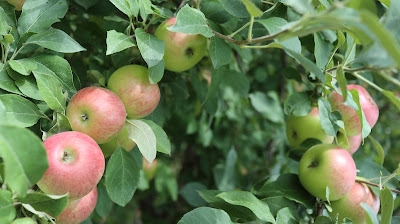I looked up the flower in my book of Hokkaido wildflowers. It’s called Ezo-kanzo, or Nikkokisuge when it is part of a flower arrangement for tea ceremony. I realized that it was the same flower we had seen covering an entire hillside on Rebun island several years previously.
 |
| See all those yellow bits? |
In June this year, I said goodbye to my garden as we headed to the US for two months of home assignment. One evening at a friend’s house, while touring his garden, I saw familiar looking leaves and seed-pods. I turned to Keith. “Those look like…”
“Those are Daylilies,” our friend explained.
“Daylilies,” I repeated. “Because they bloom only for a day, and then the next bud blooms?”
“Exactly,” he confirmed.
It turns out I had seen Nikkokisuge flowers, which I now know to call Daylilies, before I ever went to Japan. I went to Boston, and found them blooming by roadsides in the suburbs. Then I went to North Dakota, and found them in the garden of almost every house, including the house where Keith grew up. They thrive even with winters colder than Sapporo’s, it seems, and they come in colors other than the orange-yellow variety native to Hokkaido.
 |
| In Southborough, Massachusetts |
 |
| In the garden at Keith's parents' house, after a rain storm |







